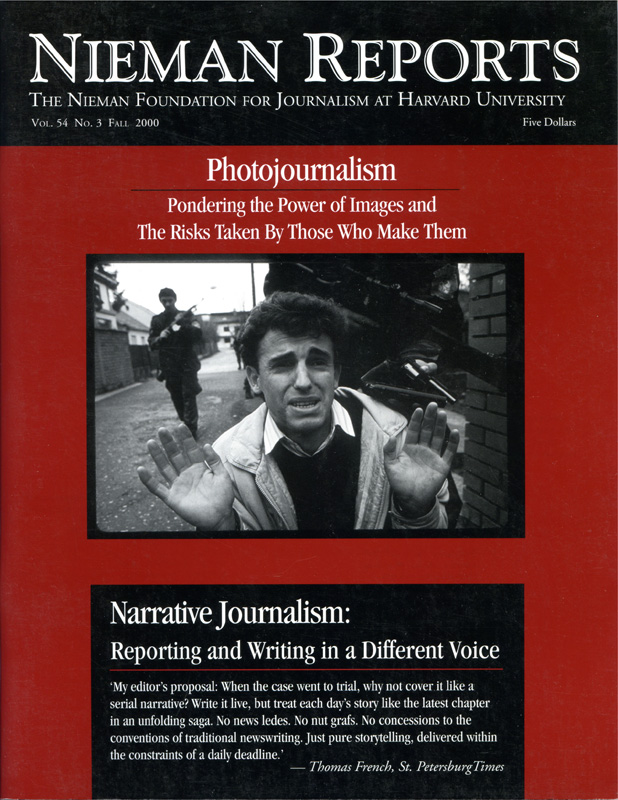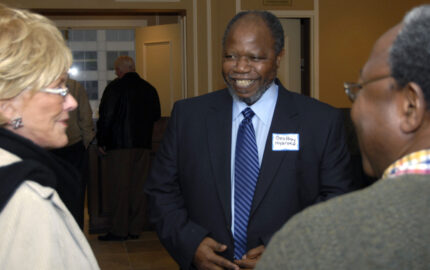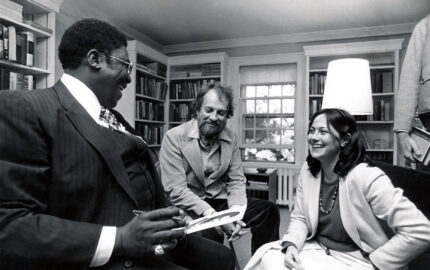We had just finished up work on a film tracking a homeless couple over five years of their remarkable and disturbing lives. The resulting documentary won a bucketful of awards and was seen by fewer people on PBS than I would have liked. I was thinking already of the follow-up, maybe two years down the line. In the clutter of notes on my desk the next day was one from a vice president at WGBH in Boston, where I work, wondering if I might take on a new project: overseeing the most ambitious and expensive series WGBH had ever attempted.
At WGBH, one of the country’s most overachieving broadcasters, an ambitious series usually means a documentary project in public affairs, science, history or the arts. And this new project would be—a series to help children learn to read. Right. I looked at the background materials I’d been given:
- Forty percent of American children read below grade level.
- A child who is not a competent reader by age nine might never catch up.
- One of the most critical indicators of a child’s later academic success is whether or not he or she is read to at an early age. Nearly half are not.
- Level l is the lowest, barely functional level of reading skills. Forty million Americans are at Level l. Discount non-English speaking Americans, and it’s still 30 million.
- Semi-literate children grow into adults who cannot read newspapers, books, or magazines; who cannot fill out job applications or follow instructions; who cannot read to their own children.
Would I move to New York and oversee the project? I believed I would.
“Between the Lions” is the product of a rare partnership including WGBH, Sirius Thinking, a company formed by gifted veterans of “Sesame Street” and Henson Productions, the top reading specialists in the country, the U.S. Department of Education, the Corporation for Public Broadcasting, five foundations, and two corporate underwriters.
“Sesame Street,” which I admire, teaches numbers and letters to preschoolers. “Lions” is for “Sesame Street” graduates. Aimed at children about to read or those just starting, “Lions” unravels the mysteries of decoding the English language: blending letters to make words, putting words together to make sentences, mastering the horrors of short vowels. Who thought of short vowels, by the way? Why is the sound of the letter ‘a’ different in ‘map’ and ‘Carl’? I know, I know, the controlling ‘r.’ Try explaining that to a four year old. But that’s just what we’re doing.
Before we thought of characters, animation or music, we spent several months with the country’s leading reading specialists constructing a curriculum that continues to inform everything we produce. This was five years ago, when the battle between believers in whole language and phonics was at full pitch. Those of faint heart should not wander into academic reading wars. Our advisors concluded, and we agreed, that “Lions” should include both whole language and phonics. We arrived there before it was fashionable: Some months later, leading educators decided that whole language (the love of reading, reading in the world around you) and phonics (mastery of fundamental reading skills) were both important. So “Lions” is a combination of whole language and phonics.
Kids love to be read to, so we featured a read-aloud story in every program. Phonics was trickier. How would we nestle lessons about short vowels, silent “e” and word blending into segments that children would enjoy? In short, how would we make phonics fun, not a lesson? My friend and colleague Christopher Cerf said, “Every good idea begins with a bad pun.” Boy, do we have them. (Beginning with the title: Our program takes place in a mythical library and one must pass between lion statues guarding the entrance). Here is a sample of recurring segments:
- Martha Reader and the Vowelles, a 60’s Motown group that only sings vowel sounds (if they want to make a word, they must sing with Hoboken great Johnny Consonati who only sings consonants).
- Gawain’s Word, in which two brave knights, each yelling part of a word, charge together to create a whole word.
- Tiger Words, a golfing phenom, who approaches a tee and must figure out which vowel will make a word.
- Chicken Jane, a hapless chicken who scratches out word clues to two children who might remind parents of Dick and Jane.
- Dr. Ruth Wordheimer (yes, it’s the Dr. Ruth, for which we’ve received some heat) who counsels early readers suffering from Long Word Freakout. (Just take it one syllable at a time.)
And so on.
“Between the Lions,” now seen daily on PBS, debuted in April. Since then we have been encouraged by two events. First, the American Television Critics Association recognized “Between the Lions” for Outstanding Achievement in Children’s Television. Essentially, they called it the best children’s program of the year. In a crowded and competitive children’s programming field, this award has proved enormously helpful in terms of validating our work. Second, and more important, independent research from the University of Kansas shows that children who watch “Between the Lions” demonstrate a startling improvement in reading skills by virtually all measures.
- Kindergartners who watched only four weeks of “Between the Lions” showed a 50 percent increase in specific reading skills. The control group improved by 13 percent.
- Scores on standardized tests rose 26 percent among children who viewed “Lions” versus five percent for children who did not.
Other results were just as dramatic.
Now deep into producing season two, we are trying to get the word out to parents and teachers that this program actually helps children learn to read. We’re trying to be inventive about how to put the series into the hands of the families that most need it. This, as we try to figure out how to teach the “-ed” concept (a song called, “It’s All in the Past”), how to explain that some words are the same forwards and back (watch for the “Palindrome Polka”) and the vagaries of spelling (“I Couldn’t Be Q Without U”). As we say at PBS, check your local listings.
Judith Stoia, a 1980 Nieman Fellow, has produced documentaries, news magazines, drama and comedy for PBS and commercial television. She is the executive producer of “Between the Lions.”



